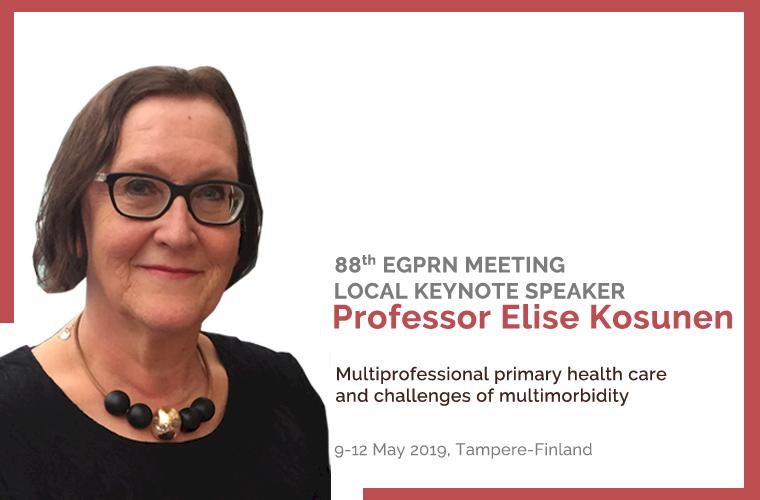Local Keynote
Elise Kosunen
Professor of General Practice, Faculty of Medicine and Health Technology, Tampere University
Chief physician, Center of Primary Health Care, Pirkanmaa Hospital District
Multiprofessional primary health care and challenges of multimorbidity
Current primary care in Finland is based on the Primary Health Care Act (1972) which addressed numerous new tasks to all municipalities. All of them had to find a new health centre organization which provides a wide range of health services including prevention and public health promotion. Multiple tasks require multi professional staff, and thus, the Finnish health centre personnel consisted not only of GPs, but of public health nurses, midwives, physiotherapists, psychologists, social workers, dentists etc. During the next decade, there has been some changes, but the idea of multiprofessional structure has remained. According to the QUALICOPC study (2012) Finnish GPs are still co-located with several other health care professionals compared to most of European countries; even compared to other Nordic countries which otherwise have many similarities in their primary health care.
During the last ten or fifteen years, health care providers and researchers have recognized a new challenge: our current systems do not meet the needs of patients with multiple health and social problems – and the proportion of these patients is increasing all the time as the population is getting older. One could suppose that preconditions of handling multimorbidity would be excellent in multiprofessional surroundings like ours, but actually, a person with multiple problems is a challenge there, too. Multiprofessional organization in primary care does not guarantee good care of patients with multiple disease, if we do not acknowledge the challenge and revise our systems. We have to develop new ways of collaboration and new models of integrated care. The difficult part is secondary care, which is organized with logics of one medical speciality per visit. In Tampere University Hospital district, we have created a care pathway model which defines the roles primary health care and secondary care. Nationwide, we have recently started to prepare national guidelines for the care of patients with multimorbidity. What we absolutely need more in the future is more research on new practices and models.

